Britex Revit Content Library
Revit Content Creation / BIM Strategy / BIM Marketing
Project Summary
Britex is Australia’s premier manufacturer of commercial stainless steel plumbing products and architectural fittings. With a sales and marketing strategy firmly focused on commercial project specification – by Architects, Interior Designers and Hydraulic Engineers – Britex was one of the first Australian manufacturers to invest in a long-term BIM strategy. With IGS as their provider of BIM content creation and strategic BIM services, Britex is considered one of the true market leaders among all BIM-enabled Australian manufacturers.
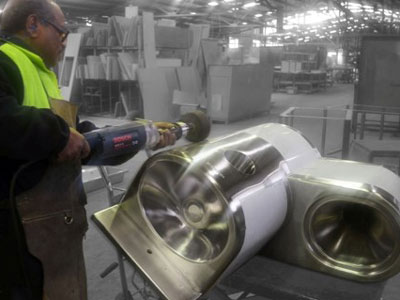
Project Image Examples
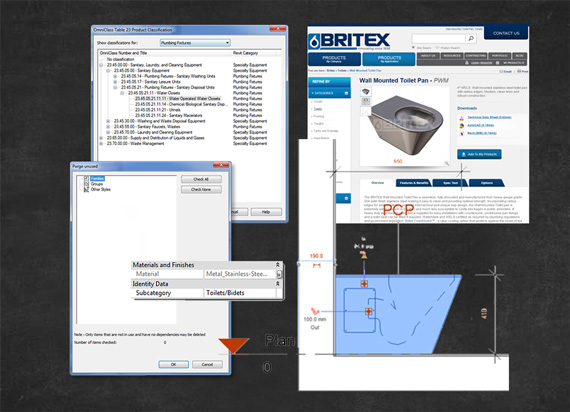
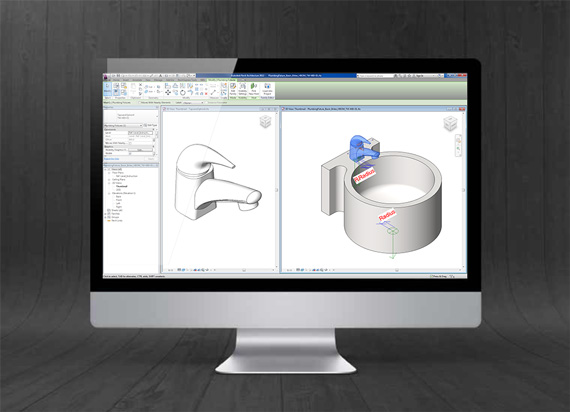
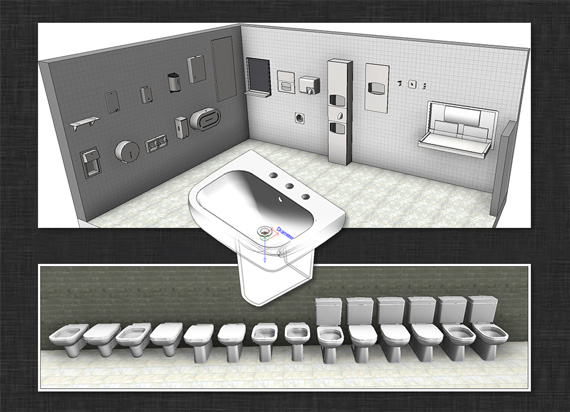
Project Background
With the number of Architects and ‘The Specifier’s Choice’ is the Britex ethos. Being highly engaged with Australia’s specifier community, Britex became aware of the AEC industry’s adoption of BIM software for design and BIM workflows being utilised on projects earlier than most.
By 2009 Britex had begun developing an extensive library of Revit families for their products at the request of several major Architecture clients. However, like many of IGS’ product manufacturer clients, Britex initially engaged not one, but several content creators prior to working with IGS, all of whom who were unable to provide content that Britex’s Architecture clients saw value in utilising. In 2012, Britex commenced working with IGS as their supplier of Revit content and BIM strategy.

Project Challenges and Solutions
Multi-discipline Design Requirements
Challenge
The Britex product range is predominantly front-of-wall plumbing fixtures like Toilets, Urinals, Wash Basins, Sinks, Troughs and Tapware. In the design phase of a project, Britex products are often documented by various types of designers including Architects, Interior Designers and Hydraulic Engineers. In a Revit sense, this poses a challenge as each of these types of designer is ideally wanting different things from the Revit families. Interior Designers are focussed on the aesthetic aspects of the product and wanting the 3D geometry in particular at a high Level of Detail (LOD), whereas Hydraulic Engineers care little about the aesthetics. Their focus being on system coordination information such as accurate water connections and sanitary outlet points. Given that Britex only wanted to create one global Revit family library, catering to these various requirements without making the files unsatisfactory for any specific user-type can be quite a challenge. As an example, higher detailed geometry (for Architects and Interior Designers) adds file size that is seen as detrimental to content utilisation by Hydraulic Engineers; whereas defining plumbing connections (for Hydraulic Engineers) can cause Revit plumbing system errors within the Revit project environment for Architects.
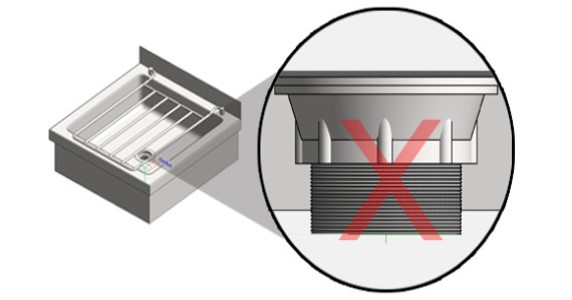
Solution
To ensure the Revit content created for Britex was utilised by the broadest possible user base, IGS focussed on creating content that provided maximum value to each project stakeholder. In the simplest possible terms, this meant addressing the following key criteria for each category of Revit content user:
- Architects: Families were capable of producing high quality documentation (e.g. 2D drawings, schedules etc) and included ample, well-structured product data.
- Interior Designers: 3D geometry was sufficient to create basic renders and accurately depict the major aesthetic elements of the products
- Hydraulic Engineers: Families included defined water connectors and sanitary outlets
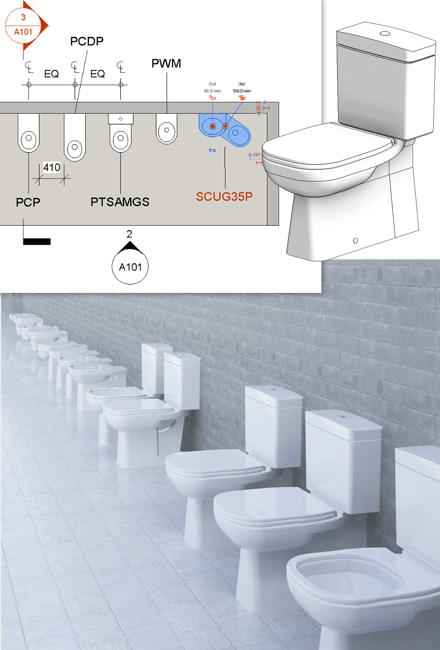
To ensure that the higher detailed 3D geometry was not a hindrance for designers who didn’t require it, IGS created the 3D geometry using modelling techniques that had minimal impact on file size and model performance in a project environment. IGS also applied rules of common sense in deciding which elements needed to be modelled in 3D with a high degree of accuracy and which didn’t. Detail settings (Coarse, Medium and Fine) in all Revit families based on what users would want to see in each of these views we implemented to further aid performance. IGS took the view that, for products with that needed plumbing connectors defined, it was better to ask those users that didn’t want them (such as Architects) to delete them than it was to ask those that did want them (Hydraulic Engineers) to add them. IGS therefore chose to define plumbing connectors in these families.It would be fair to say that the Dulux Revit Add-in has been remarkably well received by industry. It is widely referred to as a ‘best of breed’ solution for its type, not just in Australia, but globally. Numerous reviews have been published online that promote the value of the tool to Architects, whilst a number of Australia’s largest Architecture firms have made the add-in their firm-wide ‘default’ tool for specifying paints and coatings for projects within Revit. Since the add-in was first launched in 2013, subsequent versions of the Dulux Colour Atlas for Revit have been released incorporating new functionality and features that have tapped into new improvements to Revit itself. In turn, Dulux continues to hold its place in the market as not only the leading supplier of paints and coatings products, but as the most innovative supplier of specification tools.
Library Break-up
Challenge
The Britex product range is predominantly front-of-wall plumbing fixtures like Toilets, Urinals, Wash A large portion of Britex products are made-to-order, or at the very least, a range of sizes and configurations are available for many products. In creating Revit content for these products, consideration needs to be given to how the families are broken up. Whilst it’s possible to create individual Revit families that are highly flexible and capable of generating all possible configurations of a particular product – i.e. highly parametric families – many users prefer not to work with this type of content, preferring families to be broken up and more simplified in nature. Conversely, it’s not necessarily recommended practice to create individual Revit families for each unique configuration. Finding the right balance in this regard often requires an intimate understanding of both the product itself (how it is specified and sold into to the market) and how the Revit content will be managed and used by designers.
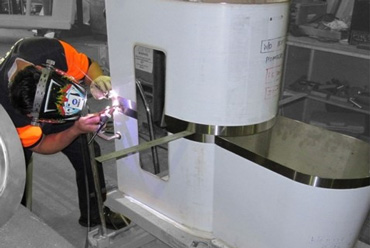
Solution
The best way to illustrate IGS’ solution to this issue is to provide an example. The Britex Security Pedestal Basin could be considered a single product line. However, this product is customised for each installation according to the following variables.
- Integral Tapware (Yes or No). If Yes, which Tap model (6 to choose from)?
- Integral Toilet Roll Holder (Yes or No). If Yes, on the Left or Right-hand side?
- Anti-ligature or Standard basin waste outlet?
- Front Fixed or Rear Fixed? If Front Fixed, is the Access Panel on Left or Right-hand side
- This equates to 126 ‘standard’ versions of this one product, keeping in mind Britex offer over 500 ‘standard’ products.
For this product, it is indeed possible and not necessarily too difficult, to create a single Revit family capable of generating documentation for every one of the 126 standard configurations. However, doing so does come with some potential drawbacks, depending on user preferences, including:
- File size is almost certainly going to be much larger which can be a deterrent for a lot of users.
- By default, users will only see one thumbnail preview image for the product in their Revit library. Unless they know the product well, they may not be aware that the product (or family) is available in a range of configurations.
- The preview image will likely appear distorted and not representative of the product, making it hard for the user to see what the actual product looks like until they open the family.
- The ‘Type catalogue’ for this family would be so long (126 lines) that selecting the right configuration may be a challenge.
- If the family needs to be audited or edited for any reason, because of its relative complexity – reference planes, equations, rules etc – it may be prone to ‘breaking’ unless the user is quite proficient in family creation.

It should be noted that the potential drawbacks above aren’t necessarily deal breakers, nor are they even technically ‘wrong’. Not at all. However, manufacturer’s BIM content is being created for the client as a marketing asset with the purpose of maximum user adoption. It therefore needs to be created in a way that caters to current and immediate future user preferences, not what it ‘technically possible’, if maximum adoption is desired.
IGS also acknowledges that – at the other end of the spectrum – creating 126 individual families would be an even worse strategy. Users do not want to handle this much content for reasons that should be extremely obvious. Some simple math should help demonstrate. 126 families at let’s say 600KB each x 150 products = 11.34GB of data and 18,900 families to manage / browse for just one supplier… multiplied by the number of suppliers a commercial design firm has.
For this product, and with similar products, IGS defined a ‘base variable’ and used this to break up the families. For this basin and other basins that have optional tapware, IGS used the tap style as the base variable. This meant that:
- Families were broken up according to the primary variable that users selected the product against, being the most suited tap style, and they could be previewed this way when browsing the content library
- Multiple taps didn’t need to be nested into the family, reducing file size significantly
- Users were able to browse the library more easily by viewing thumbnails that showed the different styles of tap in the preview images
- By having just one tap model included in the families (where an integrated tap was present) IGS was able to define the tapware connectors. As different taps have different types of connectors (e.g. cold only, hot and cold etc), if multiple styles of tap with varying connection types were nested in the families, these could not be defined/controlled.
Generally speaking, for products that are highly customisable, IGS sought to find a happy medium in creating the Revit families where they were parametric enough to ensure the number of families for each product and product range was minimal, but the families were not overly complex to use or manage.

Library Development Planning
Challenge
Not accounting for fully custom-fabricated items, Britex sells over 500 ‘standard’ products into the market; and the majority of these products are made available in custom sizes and configurations. Creating a Revit library for this product range in its entirety is therefore an extremely large project, requiring a long-term strategic approach. Accepting that such a project will be delivered over an extended period of time, how would Britex ensure that maximum return on investment could be derived over the course of the project partially as a way of contributing funding to the ongoing Revit content creation costs?
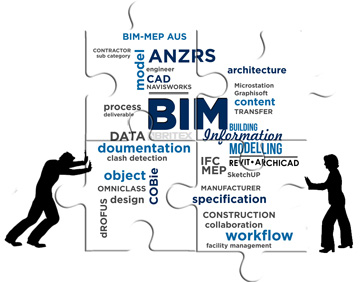
Solution
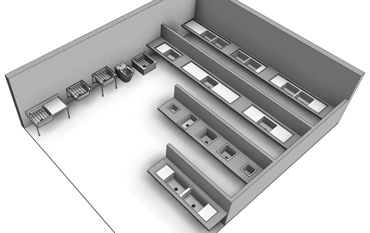
In a strategic sense, Britex focus on being able to provide a number of products in each project. For example, in a school, the bathroom fixtures, wash troughs, drinking fountains, science room sinks, cleaner’s sinks etc. In each of their product categories, Britex has a range that may necessitate up to 150 Revit families being created. Whilst there are economies of scale derived from developing Revit content for similar products at the same time, to approach a project like the Britex Revit library one complete category at a time doesn’t make commercial sense. To do so would mean Britex would end up releasing complete ranges periodically, months apart, over a very extended period, During this time, many of their most important products in numerous categories would be left without Revit content being available. IGS worked with Britex to devise strategy where selected products from core ranges were prioritised for early creation. This ensured Britex were able to offer a number of products from each category from very early on in their Revit content creation strategy. Importantly, they were able to offer designers a selection of their most frequently specified products across all core product categories. Strategically this meant Britex could be specified for a far greater number of products in a project by way of Revit content utilisation. By creating multiple products from each core category at the same time – albeit not all of them – IGS was able to derive economies of scale in creation phase that greatly reduced the cost for Britex.
Project Outcomes
It would be fair to say the Britex Revit library has been an enormous success for Britex. Being an early adopter in its category, Britex was able to benefit greatly from being first to market with quality, fit-for-purpose Revit families for their products. Although Britex’s first iteration of their Revit library was considered sub-par because they were ‘early to fail’, they were also early to research and rectify, and still release a quality Revit library before any of their competitors were able to do so.
Perhaps the greatest benefits for Britex were evident in markets where designers had traditionally specified other companies, predominantly due to habit. “If it’s not broken, don’t fix it”. However, with the emergence of BIM workflows being utilised in commercial projects and designers who had previously used AutoCAD moving to Revit, Britex was able to provide a great service to these designers who were now looking for quality Revit content, especially free Revit content from product suppliers, to help them in their new design and documentation processes. Where designers were previously going to their library of ‘CAD blocks’ and ‘standard specs’ built over many years, they were now working hard to build new Revit content libraries. By being able to provide their free Revit content to designers where other suppliers couldn’t, Britex provided great incentive to designers to change their specification habits and start using Britex products in their projects. Accordingly, specification volumes, and in turn sales figures, increased significantly following the launch of the Britex Revit library developed by IGS.


The Revit families are well constructed, perform exceptionally well in our BIM project environment and are user friendly for all skill levels. I have no qualms simply loading in the content, not feeling the need to check each family as I would with other manufacturer content, which is great for productivity. It’s fantastic to see a manufacturer adopt an uncompromising approach to producing quality Revit content. Britex set the bar high and other manufacturers should take note.
– BIM Coordinator
GHD

Big thanks to Britex for taking the effort to produce a comprehensive and quality Revit library of their products. It’s great to see they have taken the time and effort to liaise with a range of users within the industry, to deliver a BIM product that is of a quality that we’re happy to adopt and include in our library. Keep up the good work.
– National BIM Manager
dwp
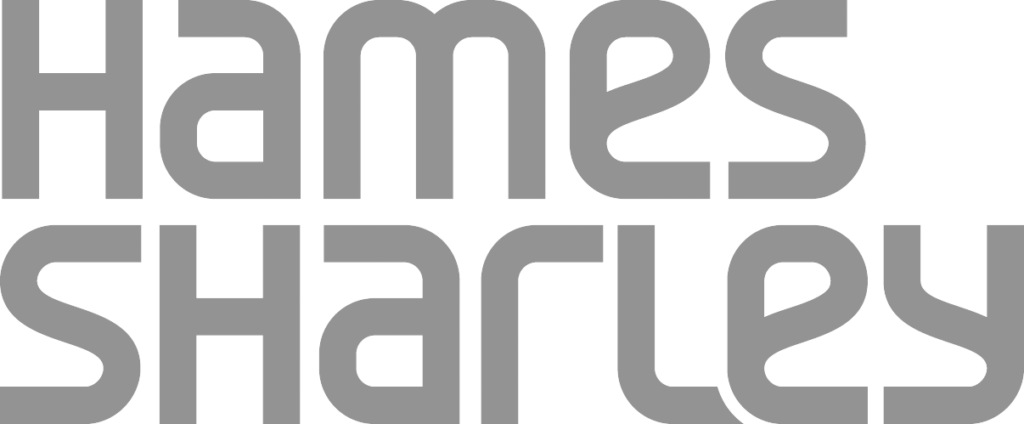
The Britex library is to date the most well planned and professional collection of Revit plumbing fixture families that we have seen. The families have been created from scratch, are not bloated with unnecessary data or over-modelled geometry, yet contain everything that is required for BIM collaboration and scheduling. Modelled to ANZRS standards, they include specification codes, understandable parameters, pre-loaded materials and product URLs. The sensible use of geometry and visibility settings make these a pleasure to work with, and should serve as a guide for any content creation.
– National BIM Manager
Hames Sharley

As an engineer and Revit modeller, I highly recommend Britex’s BIM content as it is well developed, easy to use and in a level of detail applicable to every type of user. We find Britex’s Revit content very easy to use as it is developed to a high quality that has taken all parties into account, from the architect, to the engineer, to the client. Britex’s Revit content makes my job easier as I can always rely on the quality of the content and know that it is going to stand up to our modelling demands.
– Hydraulic Project Engineer
Wood & Grieve Engineers
What Did The Client Think?

Britex engaged IGS when we were looking for a better solution to our Revit content strategy. We had been extremely dissatisfied with what we had been provided by Revit content creation companies previously. Commercial project design clients were unhappy with the Revit content we were providing them.
IGS worked closely with us to create a Revit content library that was catered to the needs of our target market (Architects, Interior Designers and Hydraulic Engineers). IGS even involved some of our key clients in the content creation process, ensuring the end result was to our clients’ satisfaction. It was clear that IGS had an excellent reputation among BIM professionals in the industry and this no doubt worked to our benefit.
Our specifier clients are now happier than ever with the service we’re providing. Our specification frequency is continues to grow and our reputation as an industry leader has never been greater. The feedback we receive from Australia’s biggest Architecture and Engineering firms about our Revit content is outstanding. We consider working with IGS as our BIM services provider to be a key part of our sales and marketing strategy.
David Kelly
National Sales Manager

Can IGS Provide You A Competitive Advantage?
Can You Utilise Our Skills, Passion & Determination?
